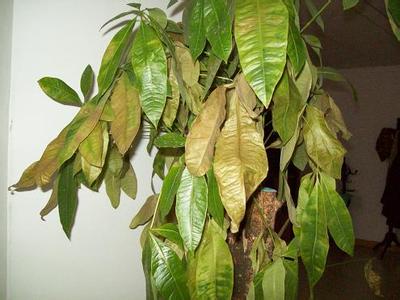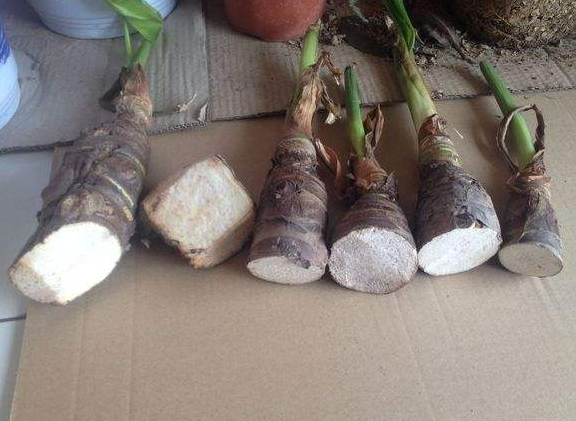Why the leaves of the rich tree turn yellow? what should I do?
The rich tree is an evergreen shrub or small tree of the genus Araliaceae, with erect stems, alternate leaves, long stalks, palmately compound leaves, 12 leaflets, 12-15 cm long and 6 cm wide. Because of its peculiar tree-shaped leaf shape, commonly known as auspicious, and because of its good luck, more and more people have been introduced recently. This flower is native to Australia and some islands in the Pacific Ocean. It is suitable for warm, moist, ventilated and well-ventilated environment. It grows best in loose, fertile and well-drained soil.

Basic knowledge of rich tree maintenance
Potted rich trees should change their pots once in 1-2 years, when they leave the house in spring, and prune yellow leaves and weak branches to promote them to germinate new shoots. Watering should follow the principle of wet between dry and dry. In spring and autumn, watering is dense according to the weather, such as sunny, rainy, dry and wet, generally once a day, when the temperature exceeds 35 ℃, at least twice a day, fertilizing twice a month in the growing season, and spraying water for new leaves to maintain high environmental humidity; shade should be carried out from June to September to maintain 60% to 70% light transmittance or placed in a place with bright scattered light. After entering the room in winter, the temperature should not be lower than 5 ℃, it is better to keep it at about 10 ℃, water it once every 5-7 days, and ensure sufficient light. In addition, in the growing season, such as poor ventilation, prone to red spiders and shell insects, should pay attention to observation. Insect pests should be caught or sprayed in time.
What if the leaves of the rich tree turn yellow?
1, too much watering, the basin soil is too wet for a long time, resulting in lack of oxygen in the soil, making part of the fibrous roots rot, hindering normal respiration and absorption of water and nutrients, causing leaves to turn yellow and fall off. After the injury, the young leaves turn pale yellow, and then the old leaves gradually turn yellow. watering should be controlled immediately, fertilization should be suspended, and the soil should be often loosened to make the soil well ventilated.
2. Drought and dehydration. Flower cultivation leakage watering or long-term watering half waist water (that is, upper wet and lower dry) will affect nutrient absorption, and it is also easy to cause dull and dull leaves and drooping leaves. First, the lower old leaves aged, and gradually withered and yellowed off from the bottom up. At this time, a small amount of watering and spraying is needed to gradually recover and then turn to normal watering.
3. Lose weight for a long time. There is no application of ammonia fertilizer or no change of soil for a long time, and there is a lack of nitrogen and other nutrients in the soil, resulting in thin branches and leaves and thin and yellow leaves. It is necessary to pour the pot in time and gradually apply rarefied mature liquid fertilizer or compound flower fertilizer into new loose and fertile culture soil.
4. Excessive fertilization. If you fertilize too much, the new leaves will be thick and uneven, and the dry tips of the old leaves will fall off. You should immediately stop fertilization and increase the amount of water to make the fertilizer flow out from the drainage hole at the bottom of the basin, or immediately pour the pot, rinse the soil block with water and then plant it again into the basin.
5, hot and hot. In summer, if you put cool flowers (such as cyclamen, Golden Bell upside down, four Seasons Begonia) in a high temperature place to let the strong light shine directly, it is very easy to cause the young leaf tip and leaf edge to scorch, or the leaf yellow to fall off. Move to a well-ventilated shady place in time.
Excessive shade. If the sun-loving flowers are placed in shady places or places with insufficient light for a long time, it will cause the branches and leaves to turn yellow. The soil and water is alkaline. There are more saline and alkali in soil and water in most areas of northern China, and flowers with acid-like soil are planted, such as rhododendron, camellia, Michelia, gardenia, orchid, magnolia, sweet-scented osmanthus and so on. Due to the lack of soluble iron and other elements that can be absorbed by the soil, the leaves will gradually turn yellow. Acid soil should be selected when planting, and alum fertilizer and water should be often watered during the growth period.
The rich tree can be watered once every ten days and half a month, and the basin soil is too wet for a long time, resulting in lack of oxygen in the soil, rotting part of the fibrous roots, hindering normal respiration and absorption of water and nutrients, causing leaves to turn yellow and fall off. After the injury, the young leaves turn pale yellow, and then the old leaves gradually turn yellow. watering should be controlled immediately, fertilization should be suspended, and the soil should be often loosened to make the soil well ventilated.
Time: 2019-04-18 Click:
- Prev

What if dripping Guanyin has rotten roots?
Dripping Guanyin is prone to rot in summer, mainly caused by the wet soil. Pull up the dripping Guanyin, cut off the rotten roots, and wear rubber gloves when cutting the roots (Dishui Guanyin is poisonous! Be careful if you have skin allergies.) Cut off a little bit of healthy tissue near the rotten part
- Next

Plants also have viviparous reproduction.
After hundreds of millions of years of evolution, from fish to amphibians to reptiles and birds, and finally to mammals, animals have acquired viviparity, the most "high-end" way of reproduction. If there are viviparous plants, you will find it hard to believe. Plants either through seeds
Related
- Fuxing push coffee new agricultural production and marketing class: lack of small-scale processing plants
- Jujube rice field leisure farm deep ploughing Yilan for five years to create a space for organic food and play
- Nongyu Farm-A trial of organic papaya for brave women with advanced technology
- Four points for attention in the prevention and control of diseases and insect pests of edible fungi
- How to add nutrient solution to Edible Fungi
- Is there any good way to control edible fungus mites?
- Open Inoculation Technology of Edible Fungi
- Is there any clever way to use fertilizer for edible fungus in winter?
- What agents are used to kill the pathogens of edible fungi in the mushroom shed?
- Rapid drying of Edible Fungi

